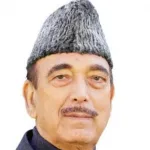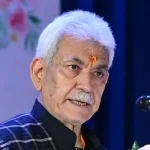HOME THEATRE
Our traditional folk theatre called ‘Bhand Pather’ or ‘Bhand Tamash’ is known as Bolllywood of Kashmir. It is derived from two Sanskrit words, Bhana (means a character in a play) and Patraa (a satirical drama). While word Bhand stands for a jester, ‘Pather’ means performance. The Bhands (artists) are still alive; though the ‘Pather’ they performed to entertain audience has declined. As a community of folk theater artists, the Bhands traveled from village to village in their colorful outfits carrying the dhol, nagara and surnai (a wooden flute with bell shaped outlet at bottom). The skits presented by them, incorporated the performance of singing, acting and storytelling to bring up problematic issues in politics, society and in religion.
As a traditional art of folk entertainers Kashmir, these actors are now an endogamous Muslim community, no longer involved in their occupation of entertainment. These actors, dancers, minstrels, storytellers, and impressionists earned their livelihood for their performances usually voluntary. Often, one performer going around the audience, collected money on a ‘play-what-you-can’ basis whilst the others continued their performance. Most artists belonged to families that were engaged in folk entertainment as their hereditary profession; their specific art forms varied greatly by region, community and language and were based on stories incorporating contemporary social satires within its practical theme vis-à-vis farcical elements, the storylines often enacted in a humorous and satirical manner.
‘Bhand Pather’, in bygone days, mirrored our society. During their performance, artists touched different themes to bring forth messages for societal change. Earlier, it was based on mythological stories and narratives, most of which were the Hindu characters performed by both Muslim and Hindu actors. The subject matter would mainly commemorate the lives of rishis, to enlighten the righteousness and reveal their firm faith in God. The main objective was to produce satire, evoke laughter, correct people and make them morally strong. The best thing of Bhand Pather was the enactment of both Muslims and Pandits to demonstrate the secular belief. Bhands were patronized by many Hindu kings until 10th Century when their performances were in a diversified form.
The earliest mention of Bhand Pather is to be found in the shruks (sayings) of Sheikh-ul-Alam, a mystic of 14th-century mystic of Kashmir, and in travel book of English writer Sir Walter Roper Lawrence in his book The Valley of Kashmir. It entered Kashmir from Persia (now Iron) through the Muslim courts in the 14th-century and spread to rest of India.
The ‘Bhands’ are found in almost all districts of Kashmir and performances are a regular feature of cultural life there. While some of the Pathers have passed away, others are becoming rare, but the art-form took on to new elements and continued to survive, alas precariously. There were particular groups of families who traditionally performed Bhand Pather as an ancestral endowment that has to be followed by the sons of Bhands. And Kashmir has always been the heart of this tradition with different groups for the folk art in different districts. However, in districts like Anantnag, Pulwama, Budgam, etc. the art was mostly practiced. While Wathora town in Budgam was the epicenter of Bhand Pather, Anantnag used to have Pandit Bhand performers who were also joined by Muslim artists.
There were many versions of performances that Bhands performed with layers of meaning and metaphors to reflect the society. Some kind include Haenz Pather (performed by fishermen), Angrez Pather (performed by English couple), Bakerwal Pather (acted by shepherds and nomads), Shikargah Pather (shows stories related to wildlife), ‘Watal Pather’ (performance by cobblers), Gosain Pather (regarding Lord Shiva and the Shaivites of Kashmir), etc. which reflected the chronology of events with different music accentuating with acts. What elderly and uneducated people could not understand through radio and television, they understood it through Bhand Pather where all the Bhands were males with their multi-talented leader known as Magun who was a skillful actor. For any female role, a male artist would dress up in female clothes.
It is worth mentioning that Bhand Pather is as old as Kashmir. It portrayed socio-political and religious, etc aspects and spread awareness, exposed wrongdoings, highlighted several issues of the society in a satirical manner, at a time when there was no social media. And what made Bhand Pather different from others is that a single artist acted, danced and played music. It didn’t involve backstage sound like any other theatre. Every artist acted in live before the audience. People were so fond of it, that they would wait eagerly for Bhands to come and make them laugh. Mostly, their performances were held in open air, under Chinar trees, and in courtyards, etc. in villages, especially, on the occasion like harvesting, Eid, and marriages, etc. Artists would travel from place to place to entertain people. Earlier, no bride or groom would get ready to marry without Bhand tamasha (show). Such was the importance of it in the society.
There were almost 80 Bhand theatres in Kashmir including National Bhand Theatre, Karam Bulund Folk Theatre, Kashmir Baghat Theatre, Baba Reshi Theatre, and Shah Qalander Theatre, etc. However, only some are functional now because the folk-art is silently dying due to easily available Bollywood films on mobile phones.
The predominant language in ‘Bhand Pather’ was Kashmiri, but there were also other languages used like Gojri, Punjabi, Dogri, Persian and sometimes even English to create dramatic effects and incompatible expressions. The style of acting swung from purely realistic to the highly exaggerated, and the narratives moved fairly from episode to episode with no elements of suspense. It was epic in its quality with audience knowing the action well. They knew what was to come but didn’t know how the event will happen. Though the storyline revolved around old stories of kings and their times, the message was loaded with contemporary statements.
Today if the grave societal evils like drug menace, gender bias, women’s rights, dowry, corruption, etc. will be handed over to Bhands, I am sure, huge viewers will turn over to watch them and get educated. But how sad! Kashmir has lost its cultural bonding and identity. The disappearing folk theatre craves to flourish, find space and be given special status with an assured income to the practitioners to save it from facing extinction. Let’s, keep the art alive and understand the fact that without preserving the cultural ethos of Kashmir, we can’t change the theatre scenario, and will have identity crisis one day as we are leaving our roots.
(Author is award-winning columnist from Rafiabad, and a recipient of National Peace Award [email protected])





